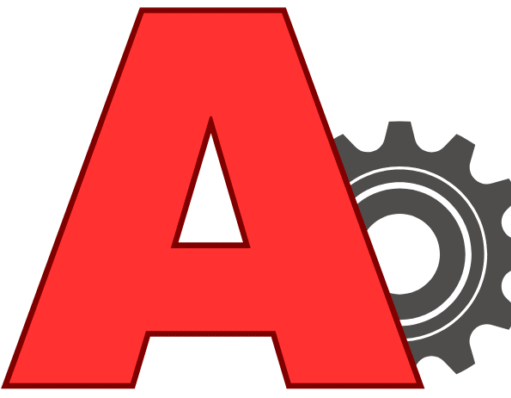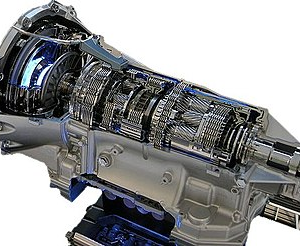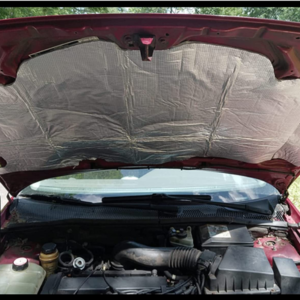
Simple fluid replacement, heavy-duty galvanized steel 75-751The Oil, Professional Grade Drip Tray Pan guards against spills of automotive fluids like engine oil, transmission fluid, and power steering fluid on roads, garage floors, shop structures, vehicle showrooms, and more. It is a fantastic choice for use in mechanics or automotive shops because it is strong enough to survive frequent use. Check the oil in automobiles, motorcycles, boats, and other vehicles while guarding the garage floor or driveway from stains, spills, and drips that are difficult to remove! Besides being used for vehicles, it can also be used to catch drips from barbecues and under garden plants.
The oil leaks with Old cars, jeeps, trucks, lawn equipment, projects, etc. safeguard your garage floors from drips, leaks, and spills. Even though we may not always have the time, we don’t want the garage floor to be disorganized. While you remedy the leaks, the Lubrimatic 75-755 galvanized drip pan will keep your flooring safe. The pan’s substantial dimensions of 17-1/2″ x 25-3/4″ x 1″ height will guarantee that it will catch leaks and keep your garage floor tidy.
Tools to be used when changing the Oil of your car
- New oil filter.
- Oil.
- Oil filter wrench.
- Socket wrench set.
- Something to catch the old oil
- A funnel.
- Some old rags.
- Car ramp.
I’ve always had my car’s oil changed at a fast lube ever since I’ve owned one. I would find myself sitting in a lounge every 3,000 miles, eating free donuts while another man changed my oil. However, it never felt natural. I used to stand in front of the window and look into the garage while the mechanics skillfully worked on my automobile. I would say, “That seems simple.” Why am I spending $25 on a task that I could complete myself?
I was angry that I had to pay another man to change my oil, but I was also jealous. I wanted to be able to fix cars like those men did because I appreciated their knowledge and abilities. Naturally, I did nothing about it—primarily out of laziness. Well, last month I finally got around to learning how to change the oil on my car after ten years of bringing it to a fast lube. Moreover, it felt wonderful. I’ve included a quick guide below on how to change your car’s oil. Let’s get going.
The Benefits of Changing Your Oil Yourself
Spend less. Jiffy Lube and other comparable businesses often charge between $25 and $30 to change your oil. The expense of labor is split in half. They occasionally have deals, but they’re really infrequent. You can change your own oil for only approximately $15, which includes a new filter and some fresh oil. Every little bit helps in this difficult economic climate. The manly guy is independent and thrifty. Nothing will be stolen from your car. My phone vanished after just one trip to the quick lube. Of course, the employees played stupid when I confronted them about it. A few CDs were also seized from another oil change shop by me.
Learning a manual skill and completing a project yourself are the two things that will give you the most macho confidence. The satisfaction you have after changing your oil is significantly greater than the satisfaction you experience after scoring 100 on Guitar Hero. You’ll develop oily hands, and the smell of perspiration and oil will emanate from you in a really manly manner.
How Often Should You Change Your Motor Oil?
The usual recommendation for oil changes from auto dealers and mechanics is to perform them every 3,000 miles or every three months. Many individuals now think that it is an unchangeable law of the universe since it has been repeated so frequently. The 3,000-mile rule is promoted by auto dealers and mechanics because it encourages drivers to have their oil changed more frequently, which generates more business for them.
In actuality, the 3,000-mile rule is sound advice. If you want to make a ton of money and own a fast lube, Modern engines and motor oils can actually last much farther between oil changes than 3,000 miles. The majority of autos have an oil change interval of 5,000 miles. Additionally, I’ve seen some vehicles that may travel 12,000 miles before requiring an oil change. Actually, there isn’t a precise amount. In short, it is more than 3,000 kilometers. So disregard the 3,000-mile limit. To learn how far between oil changes your automobile can go, consult its owner’s manual. It sometimes depends on the oil lube you use.

How to Change Your Motor Oil
Gather your tools and materials. You don’t need much to change your oil. Below we list the essentials:
- a fresh oil filter Oil filters of varying sizes are needed for various vehicles. To determine what size you need, see the owner’s manual of your car. To find out which oil filter your automobile requires, you can also consult the auto parts catalog that all auto shops carry. All you need to know is the year, make, and model of your car.
- Oil. After draining your engine, you require enough oil to refuel it. The majority of autos need 4 or 5 quarts of oil. Additionally, be sure to purchase the proper oil grade for your vehicle. For information on the quality and quantity you require, consult your owner’s manual.
- Tool for oil filters. Sometimes you can simply unscrew the filter by hand to remove it. Use an oil filter wrench if it’s too tight. It is an add-on that you use with a socket wrench. Ensure that the filter wrench attachment you purchase corresponds to the size of your oil filter. The cost of the attachment is roughly $3.
- Screwdriver set. A socket wrench is required to remove the drain plug and possibly the oil filter.
- a container for collecting used oil
- Any solution will do. A sophisticated oil drip pan is an option, but you could instead use an old refrigerator drawer or an old bucket.
- A few used rags. In case you need to clean the oil plug after dropping it into the oil pan. They work well for cleaning your hands as well.
- Although not essential, it might nonetheless facilitate your work. You can purchase plastic ramps to raise the front of your car off the ground. You’ll have extra space to work underneath your automobile as a result. Most auto retailers sell automobile ramps for around $30.
Warm up your vehicle. Take your automobile for a run to warm up the engine block and make sure all the old oil has been drained out. The oil should be just warm enough to thin down a little bit—not too hot. Simply switch on your heater to see whether your automobile is sufficiently warmed. You’re prepared to drain the oil once your feet are toasty.
Put the automobile on a level spot. Put the parking break on and park your car anywhere flat. Put the ramps in front of your front wheels and drive up them if you have them. Always have a guide out front to make sure you don’t end up driving.
- Open the hood, then take the oil filler cap off. The oil can drain more quickly if the oil filler cap is taken off. As the oil flows away, it lets air enter the engine.
- Get rid of the oil plug. The oil plug can be found below your car. It is rather simple to locate. On the bottom of the oil pan, there is a sizable bolt. Start unscrewing the nut with a socket or wrench of the proper size.
- Try this simple method if the nut is too tight: obtain a piece of tubing that is slightly longer than your socket wrench and place it over the handle of your socket wrench. You’ll have more leverage as a result.
You run the risk of getting oil all over the place if you use your wrench to completely remove the oil plug. It must be sufficiently loosen so that you can begin to unscrew it with your fingers. Place your drip pan beneath the hole before removing the stopper. Pull the plug once everything appears to be in place. If you don’t hold the oil plug firmly, you’ll have to search your drip pan for it. Oil should drain. After removing the oil stopper, allow the oil to completely drain out. The majority of engines drain in 2 minutes or less.

Take out the oil filter. Finding the oil filter on your engine is perhaps the most difficult step in the removal process. When I changed my car’s oil for the first time, I fumbled around under the car for a few minutes trying to find the dang thing. Oil filters could be placed on your engine’s side, back, bottom, or top because there isn’t a set location for them. Just take a look at your brand-new oil filter and begin scanning the underneath of your automobile for anything resembling it. Your oil filter is that.
It can be challenging to remove your filter if the automaker places it in an odd location. Be confident that you can remove it, even if you have to strangely twist your arm to do it. The filter is frequently easy to remove by hand. If it’s too tight, however, get out your filter wrench. Turn it a couple times until it starts to relax. After that, take out the filter wrench and finish taking the filter apart by hand. Make sure your drip pan is behind the filter before you remove it. There will be a sizable stream of oil coming out when the filter is removed.
Install the New Oil Filter
Make sure that the rubber gasket ring comes off with the oil filter when you remove it. The new filter won’t get a good seal on the engine if it’s left on the automobile. Replace the oil filter. Apply fresh oil to the gasket ring of your new filter by dipping your finger into it. The filter will fit better against the engine as a result. The oil filter’s replacement should be threaded into the same hole. Your oil filter may be tightened easily. Once it stops rotating, cinch it with your fingertips. Give it one more powerful half turn after that. That ought to solve the issue. There are some oil filters that include instructions on how many spins to give the filter.
Replace the oil plug, Dispose the old oil
Before you begin tightening it, some mechanics advise changing the sealing washer on your oil plug. If it’s a metal one that’s in good shape, you can skip replacing it. Rethread the drain plug into its hole after installing the washer. They start to tighten. Get out from under your car when it’s snugly secured and take away the drip pan. Oil the engine again. Start adding fresh oil to your car by inserting your funnel into the oil filler hole on top of the engine. Again, based on the vehicle, 4 to 5 quarts should be sufficient. Once all of the oil has been added, secure the oil cap and shut the hood.
Start the car once you’re finished, and let it run for around 5 minutes. This achieves two goals. It enables your engine to regain proper oil pressure in the first place. It also provides you an opportunity to check for leaks close to your oil filter and oil plug. Stop the vehicle and tighten the plug and filter as necessary if you notice any leaks.
Get rid of your used oil. Don’t dispose of your engine oil in the sewer or the trash unless you want to serve time in jail or pay a hefty fine. Take it to a proper disposal facility instead. According to laws in the majority of states, fast lubes and gas stations must accept old motor oil from customers for nothing or at a low fee. Simply put the used oil in the drip pan of a few used milk bottles. To accomplish the transfer, you’ll need a helping hand and your funnel. Put the jugs in the back of your car, screw on the lids, and deliver them to your neighborhood fast lube. Additionally, you can donate them your used oil filter.
Equipment and tools needed to change the oil in your car
- New oil filter.
- Oil.
- Oil filter wrench.
- Socket wrench set.
- Something to catch the old oil
- A funnel.
- Some old rags.
- Car ramp.
Reference: www.artofmanliness.com/skills/manly-know-how/how-to-change-your-motor-oil/













